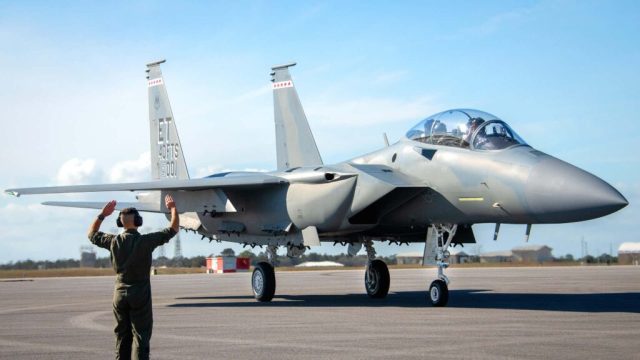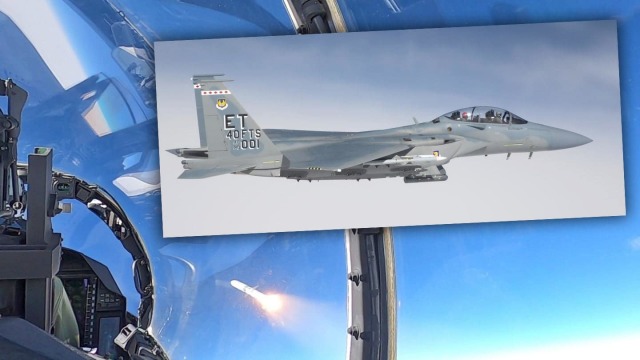The deeply upgraded F-15 fighter launched the AIM-120 AMRAAM air—to-air missile. The car made its launch flight a year ago. Soon after, the first F-15EX was handed over to the US Air Force.
The US Air Force tested the F-15EX Eagle II fighter jet for the first time with a rocket launch. The tests are considered as an important stage of testing the entire weapons system of the new aircraft.
The tests were conducted on January 25 over the Gulf of Mexico. Eagle II launched the AIM-120D AMRAAM missile at the BQM-167 target drone. The aircraft is assigned to the 40th Flight Test Squadron (40th Flight Test Squadron).
During the tests, the F-15EX used onboard sensors, including an extremely powerful AN/APG-83 radar with an active phased array antenna (AFAR). The missile flew towards the drone, but did not hit it: when the shot was recognized as successful, the AMRAAM flight was stopped.
Tests have shown that the aircraft can play its main role, namely, to gain air supremacy. In addition, it can be used to strike the ground.

F-15EX
Image Source: USAF
The first F-15EX was handed over to the US Air Force last year. The Air Force expects that it will replace the outdated F-15C/D, providing fundamentally new capabilities, such as UAV control and the use of new hypersonic weapons.
The Americans said the F-15EX is capable of carrying up to 22 guided air—to-air missiles or "hypersonic weapons up to 22 feet long and weighing up to 7,000 pounds." If we talk about mini-bombs of the Small Diameter Bomb type, then their fighter is capable of taking up to 28 units. Consequently, the F-15EX will become one of the most powerful fighter-bombers. In total, the US military expects to receive about two hundred such vehicles.
The F-15EX is sometimes considered as an alternative to fifth-generation fighters, but this is not true: Americans do not abandon either the F-22 or the F-35 — the latter should last for decades.
Recall that recently photos of deck F-35C were posted online, the radio-absorbing coating of which was seriously damaged after several months of operation in marine conditions. These aircraft are based aboard the aircraft carrier USS Carl Vinson. The pictures were taken during his stay in the Philippine Sea in January.

